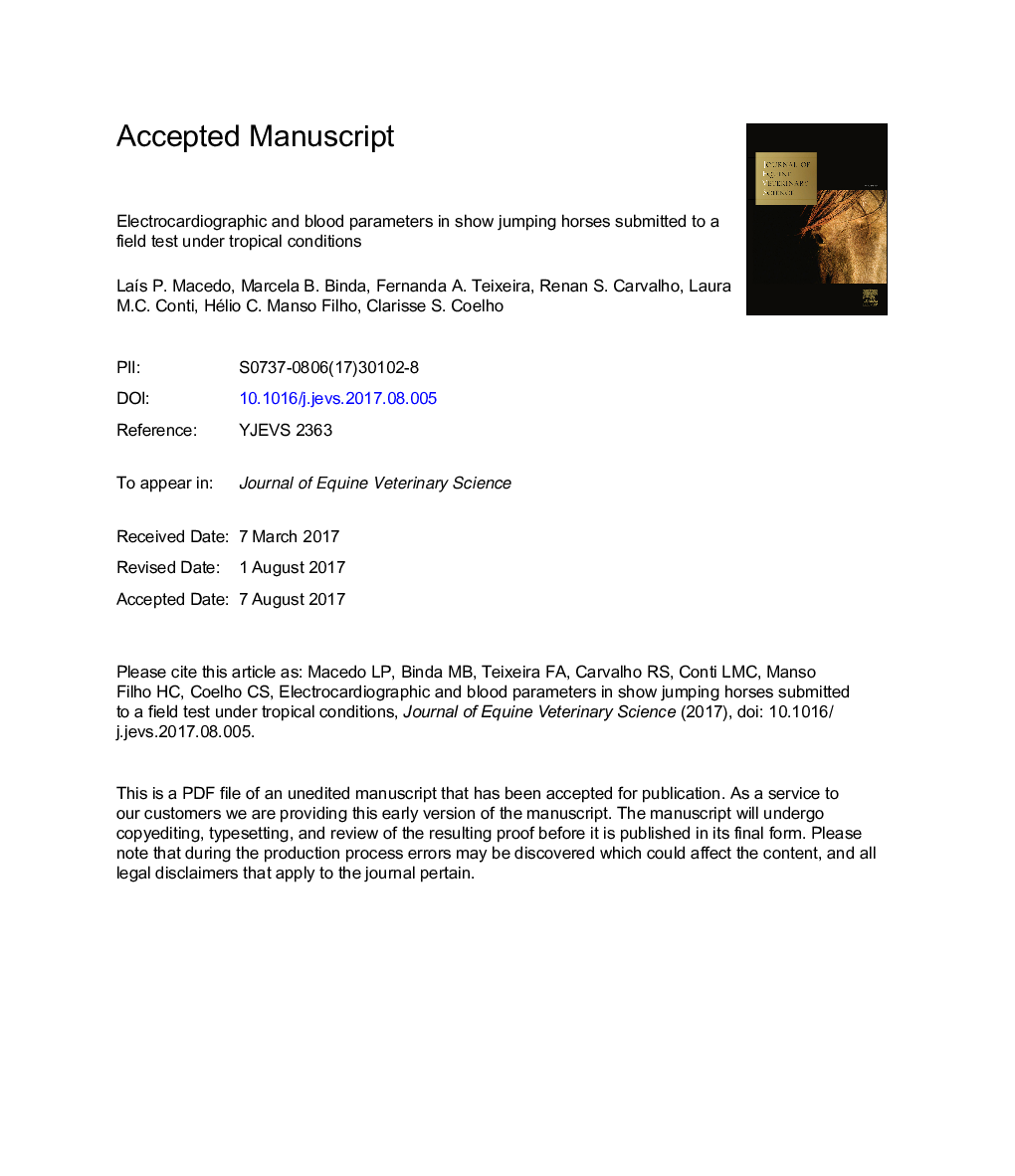| کد مقاله | کد نشریه | سال انتشار | مقاله انگلیسی | نسخه تمام متن |
|---|---|---|---|---|
| 8483359 | 1551542 | 2017 | 17 صفحه PDF | دانلود رایگان |
عنوان انگلیسی مقاله ISI
Electrocardiographic and Blood Parameters in Show Jumping Horses Submitted to a Field Test Under Tropical Conditions
ترجمه فارسی عنوان
پارامترهای الکتروکاردیوگرافی و خون در اسب پریدن نشان داده شده به یک آزمایش میدان تحت شرایط گرمسیری
دانلود مقاله + سفارش ترجمه
دانلود مقاله ISI انگلیسی
رایگان برای ایرانیان
کلمات کلیدی
اسب، الکتروکاردیوگرافی، ورزش، پریدن،
موضوعات مرتبط
علوم زیستی و بیوفناوری
علوم کشاورزی و بیولوژیک
علوم دامی و جانورشناسی
چکیده انگلیسی
Little research has been done monitoring fitness of show jumping horses in field conditions. Therefore, there is a need to define fitness indices, including cardiac evaluation, for horses used in such a technical competition under tropical conditions. The objective of this study was to evaluate the influence of a field exercise test on blood and electrocardiographic parameters of show jumping horses. Twelve horses, 11.3 ± 4.1 years old and 490.4 ± 33.9 kg, were enrolled in the study. Blood sampling and heart rate (HR), respiratory rate, and body temperature measurement were performed before (T0) and immediately after exercise (T1) and at 30 minutes (T2) and 120 minutes (T3) of recovery. Packed cell volume, red blood cell count, hemoglobin concentration, mean corpuscular volume and mean corpuscular hemoglobin concentration, serum aspartate aminotransferase (AST), creatine kinase (CK), and plasma lactate were evaluated. Electrocardiographic variables were analyzed at T0 and T1. All variables were analyzed for normality through Kolmogorov-Smirnov test, and comparisons were made using the Tukey test for hematological variables and t-test for electrocardiographic parameters, considering P ⤠.05. Exercise test significantly altered all physiological and blood parameters, except for AST, with higher values recorded at T1. Rhythm analysis revealed a sinus rhythm in 50.0% of horses, with mean HR of 31.5 ± 5.8 beats/min at rest, and sinus tachycardia in 75.0% of horses, with mean HR of 76.9 ± 15.2 beats/min after exercise. Other findings included significant reductions in P wave and QRS durations and PR and QT intervals, and significant increases in P wave amplitude and HR. The field jump test led to significant alterations in the studied variables. These results can be used to evaluate athletic conditioning of show jumping horses trained under tropical conditions.
ناشر
Database: Elsevier - ScienceDirect (ساینس دایرکت)
Journal: Journal of Equine Veterinary Science - Volume 58, November 2017, Pages 1-6
Journal: Journal of Equine Veterinary Science - Volume 58, November 2017, Pages 1-6
نویسندگان
LaÃs P. Macedo, Marcela B. Binda, Fernanda A. Teixeira, Renan S. Carvalho, Laura M.C. Conti, Hélio C. Manso Filho, Clarisse S. Coelho,
